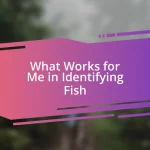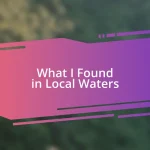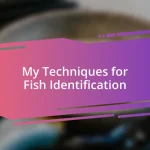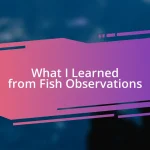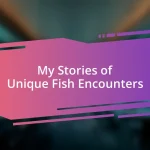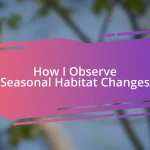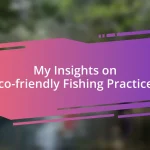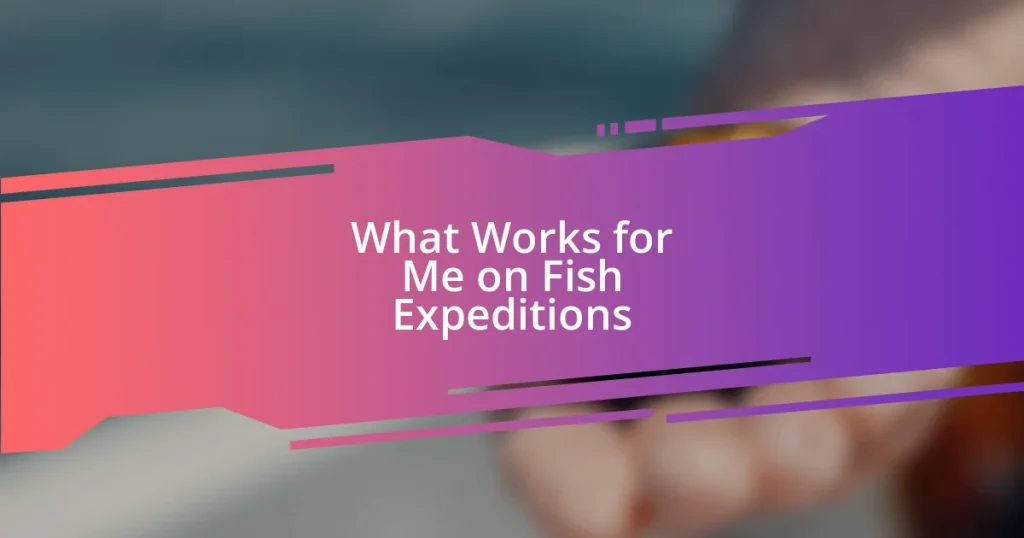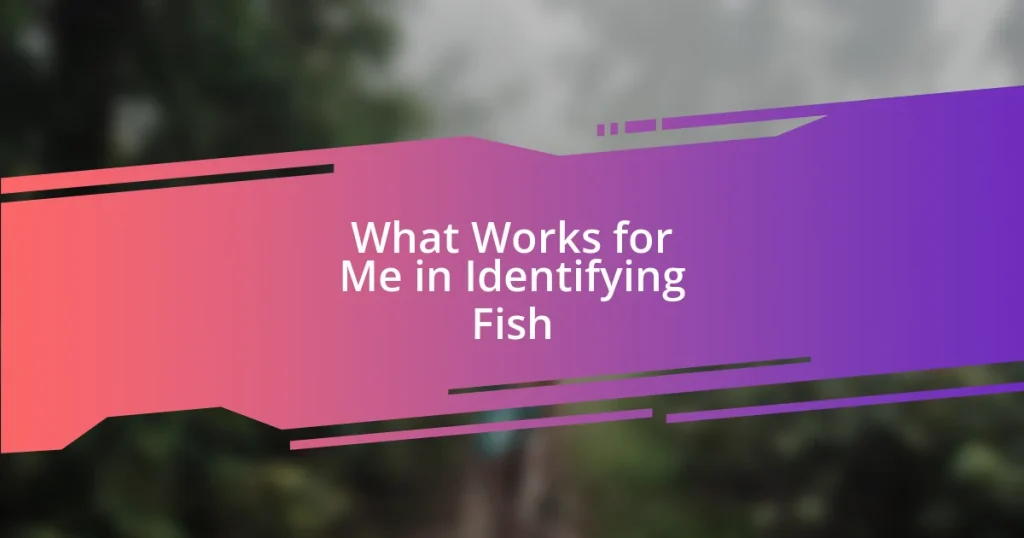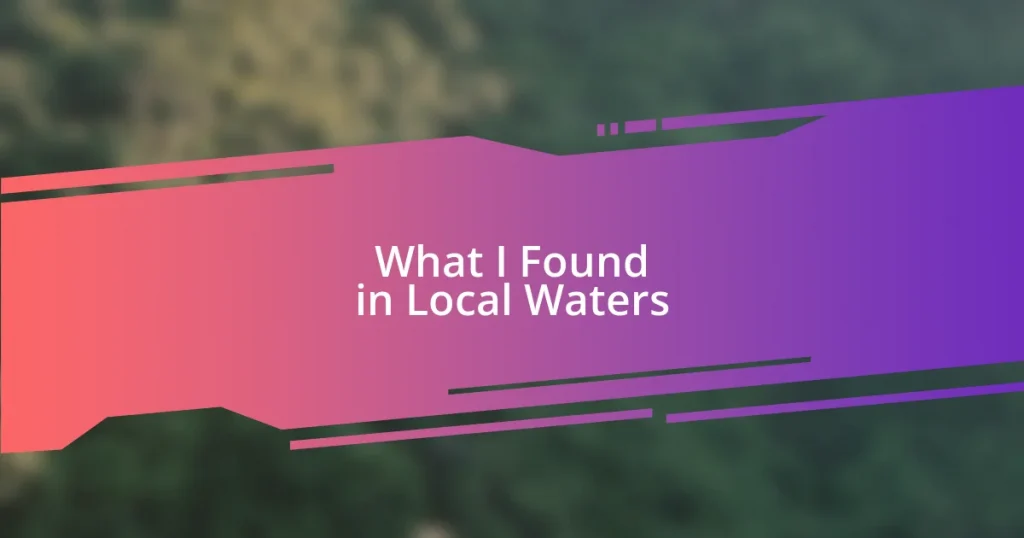Key takeaways:
- River degradation is often silent and interconnected, exacerbated by pollution, habitat destruction, and over-extraction of resources, impacting both ecosystems and local communities.
- Successful river restoration requires meticulous planning, stakeholder engagement, and adaptive management, fostering community pride and connections to nature.
- Monitoring and sharing successes, even small ones, build community momentum and awareness, enhancing collective stewardship and resilience towards the ecosystem.
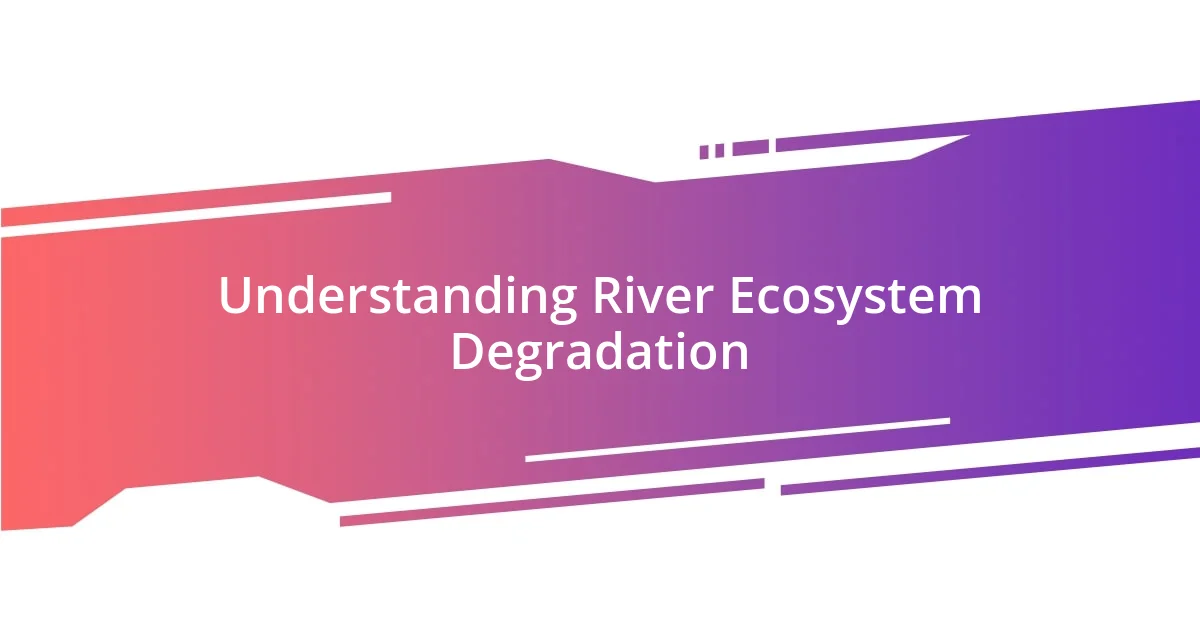
Understanding River Ecosystem Degradation
River ecosystems are incredibly complex, and their degradation often happens silently, like a slow leak from a dam. I remember standing by a once-thriving river, now murky and lifeless. It made me question how we let such beauty slip through our fingers. What happened to the vibrant colors of fish darting through clear waters, or the symphony of frogs calling at dusk?
As I explored further, I learned about pollution, habitat destruction, and the over-extraction of water. Each issue compounds the others, almost like a bad relationship spiraling out of control. One evening, while examining the banks, I noticed plastic debris caught in the reeds. It struck me as a metaphor for our inability to see the connection between our choices and the health of our rivers.
It’s not just the flora and fauna that suffer; these ecosystems impact our communities profoundly. I once spoke to a local fisherman who shared his growing frustration as the fish he once relied on disappeared. How much longer could he keep his family fed? These stories aren’t just statistics; they are the reality we face when we ignore the signs of degradation. Understanding this is our first step toward meaningful restoration.
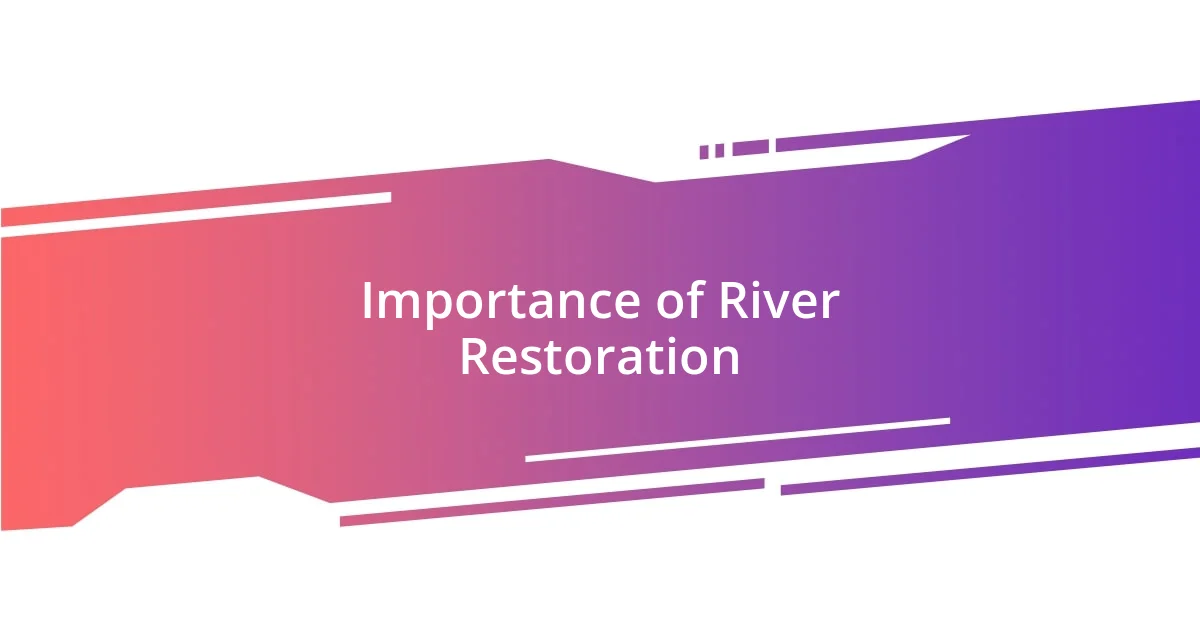
Importance of River Restoration
Restoring river ecosystems is essential because they serve as the lifeblood for countless species and communities. During one of my restoration projects, I witnessed firsthand the dramatic transformation of a previously barren bank into a lush, thriving habitat for birds and aquatic life. This revitalization not only brought back the species but also revived local community pride and engagement, reinforcing the notion that healthy rivers lead to healthier human experiences.
Here are some key points on the importance of river restoration:
– Biodiversity Support: Restored rivers improve habitats, allowing a diverse range of species to flourish.
– Water Quality Enhancement: River restoration efforts often lead to cleaner water, benefiting both wildlife and human populations.
– Flood Mitigation: Healthy rivers and their floodplains can absorb excess rainwater, reducing the risk of flooding in surrounding areas.
– Recreational Opportunities: Revitalized rivers attract people for fishing, kayaking, and hiking, fostering a connection with nature.
– Community Well-Being: As I learned through interactions with locals, restored rivers can enhance mental health and well-being, creating spaces for relaxation and community gatherings.
These aspects highlight how river restoration is not just an environmental concern; it’s a vital part of ensuring sustainable futures for both ecosystems and human communities.
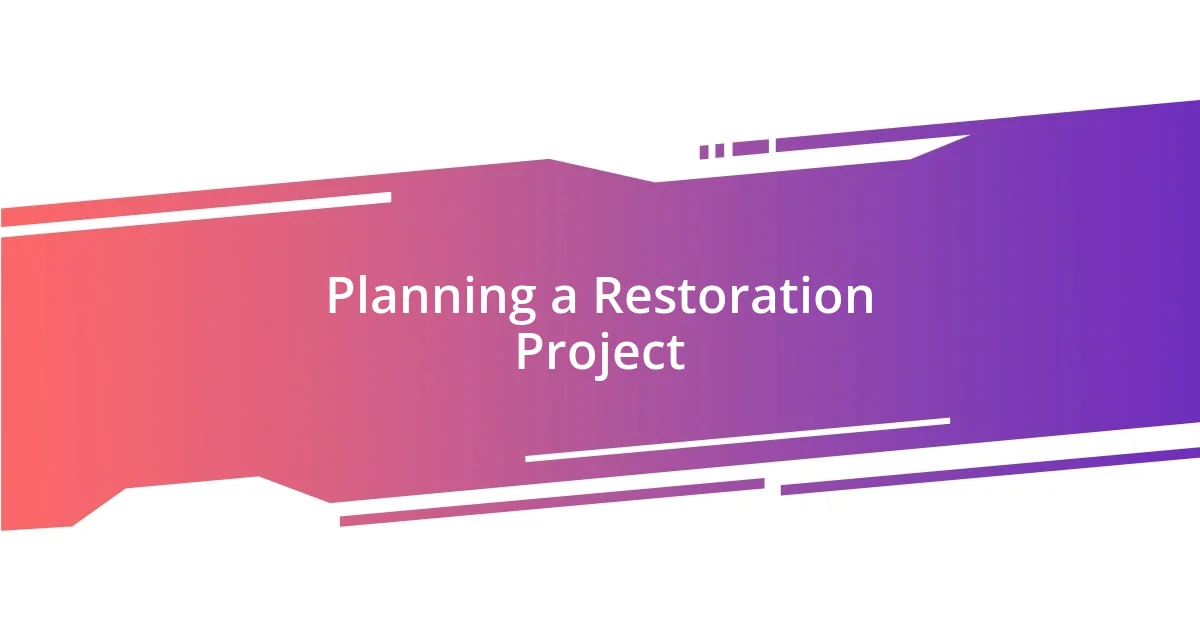
Planning a Restoration Project
I’ve found that meticulous planning is the cornerstone of any successful river restoration project. It begins with gathering a diverse group of stakeholders, from local community members to environmental scientists, creating an inclusive team that brings multiple perspectives to the table. In one project, I recall facilitating a workshop where everyone shared their favorite memories of the river. Hearing those stories reminded me how interconnected we are to our natural surroundings and reinforced our commitment to restoring it.
Moreover, research is key in this planning phase. Understanding the specific challenges facing the river helps ensure the restoration efforts are targeted and effective. During one project, we surveyed the area to identify invasive species and pollution sources before laying out our action plan. The detailed analysis not only guided our strategy but sparked a passionate discussion among volunteers who felt a personal stake in the river’s health. It was inspiring to see how knowledge rallied people to act.
Planning isn’t just about logistics; it’s about vision. It’s essential to envision what the restored river will look like in the future. I remember sketching out our goals on a whiteboard, dreaming of a vibrant ecosystem where fish could thrive and kids could play by the water again. These visions are what motivate everyone throughout the often long and challenging restoration journey. They serve as reminders that every small step taken in planning leads us closer to making those dreams a reality.
| Aspect | Description |
|---|---|
| Stakeholder Engagement | Involve community, scientists, and local leaders in the planning process. |
| Research Analysis | Conduct thorough research on the river’s current state and challenges. |
| Vision Creation | Develop a clear, shared vision of the desired outcomes for restoration. |
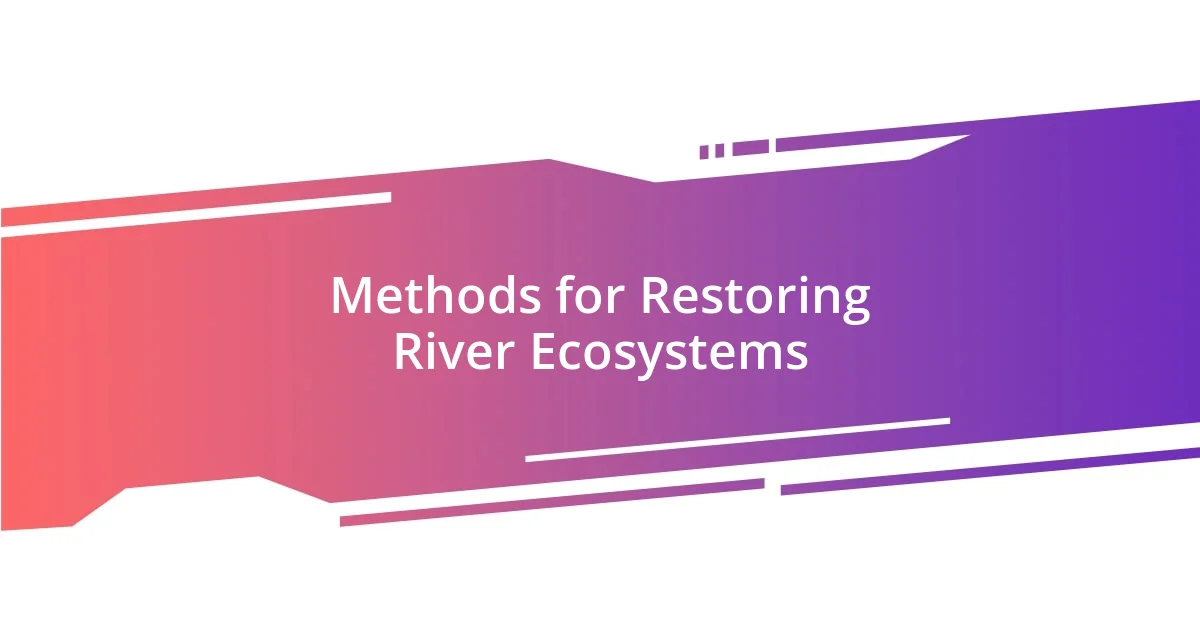
Methods for Restoring River Ecosystems
When embarking on river restoration, one effective method I’ve found is the use of bioengineering techniques to stabilize banks and enhance habitats. For instance, during a project where we installed live staking—planting dormant cuttings of native species—I noticed the immediate impact on both the ecosystem and community spirit. As the willows began to root and flourish, it was heartening to see local children return to the riverbanks, observing wildlife and participating in nature once again.
Another strategy that has proven valuable is reintroducing native plant species. In one memorable project, we worked tirelessly to propagate and plant local grasses and wildflowers, which not only provided essential cover for insects and birds but also improved water filtration. Have you ever thought about how something as simple as a flower can invite so much life back into a space? Seeing these native plants take root was an emotional experience for me—it symbolized resilience and renewal, reminding me of nature’s incredible ability to bounce back when given the chance.
Finally, monitoring and adaptive management greatly enhance the success of restoration efforts. I remember a time when we gathered data on water quality after implementing several restoration steps. It was during one of our quarterly check-ins that we noticed a remarkable increase in macroinvertebrate populations, indicating healthier waterways. It brought the team together in celebration, as we realized how our collective efforts were paying off. This process taught me that restoration isn’t just about the action; it’s an evolving journey of observing, learning, and adjusting our approach based on what the river tells us.
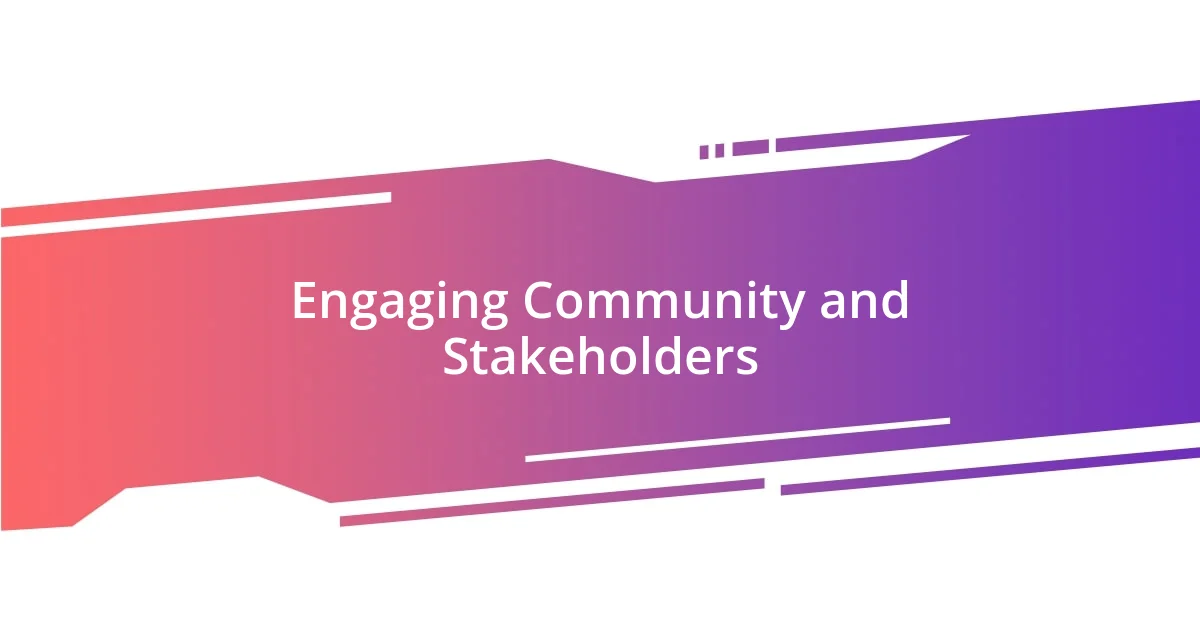
Engaging Community and Stakeholders
Engaging the community and stakeholders is truly vital for any river restoration initiative. One evening, while attending a town hall meeting, I was struck by how passionate people were about the river’s fate. Local fishermen, families, and environmental advocates all voiced their concerns and aspirations. Witnessing this unity was a powerful reminder of the deep connections individuals have with their local ecosystems; it solidified my belief that collective action could drive impactful change.
I often recall a community clean-up event organized in partnership with schools and local businesses. The energy was contagious as volunteers of all ages came together to restore the riverbank. Young students, eager to learn, asked me questions about the wildlife we might attract, which brought back fond memories of my own childhood explorations at the river. I realized then that engaging the next generation not only fosters stewardship but also creates lasting bonds between people and nature.
As we move forward, it’s essential to keep the lines of communication open. I learned this firsthand when we initiated a monthly newsletter to share progress updates and celebrate milestones. I remember receiving an email from a local resident sharing her amazement at how the river was transforming. She described taking her children to the newly restored area and watching them play – those moments of joy were the ultimate validation for our efforts. It reinforced the notion that when communities rally around a common cause, the passion and dedication can create waves of positive change, quite literally!
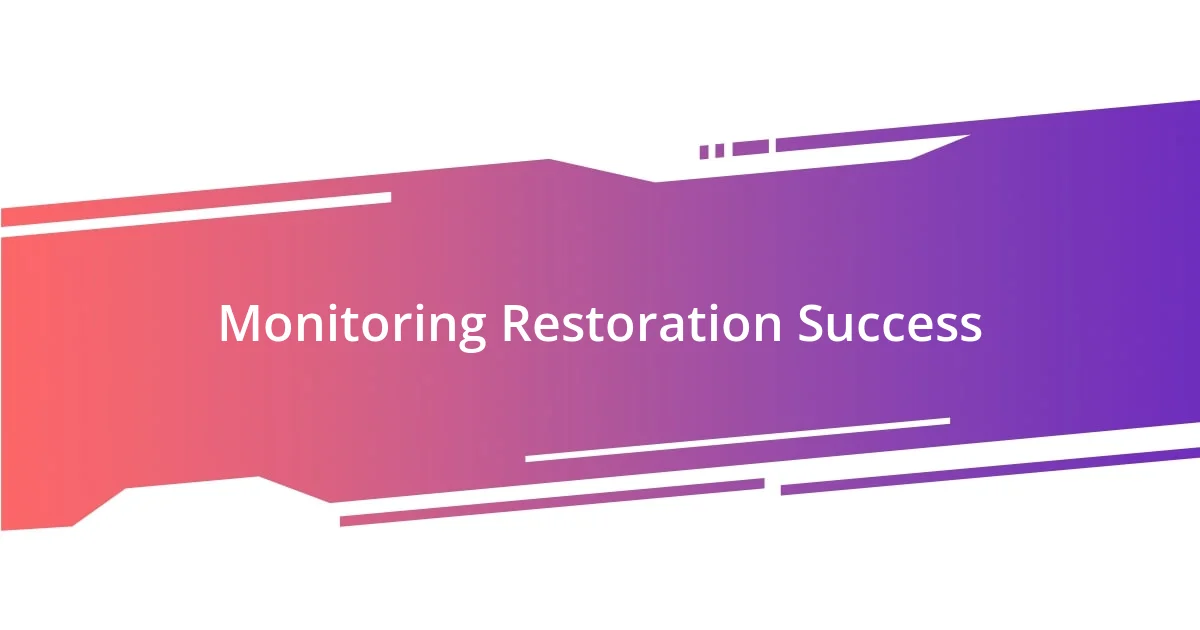
Monitoring Restoration Success
Monitoring restoration success is a intricate dance that requires both vigilance and adaptability. I’ll never forget the first time we set up a monitoring program after a restoration project. We meticulously measured various parameters, from water quality to plant biodiversity, and I was struck by how every data point was a story waiting to be told. It was during one of those field assessments that we stumbled upon a cluster of dragonfly larvae thriving in a previously barren stretch of riverbank. I felt a wave of excitement—was this nature’s way of saying “thank you”?
As I engaged in active monitoring, I realized the value of involving citizen scientists. During one particular summer, we organized training sessions for volunteers, teaching them how to identify key indicator species. It was inspiring to witness families come together, armed with field guides and excitement, as they reported their findings. Their connection to the river deepened as they began to see themselves as part of the restoration effort. I wondered, how powerful is it to empower a community to be the eyes and ears of the ecosystem?
I’ve also learned that monitoring data can lead to unexpected insights that reshape our strategies. There was one instance where, despite our diligent efforts, the water quality reports showed a decline for several months post-restoration. Initially, I felt discouraged, but I viewed this as a crucial opportunity to learn. It turned out that upstream agricultural runoff was affecting the river’s health. Reflecting on this experience, I recognize that successful restoration is not just about reaching immediate goals; it’s a continuous exchange of information and a shared commitment to nurturing the ecosystem.
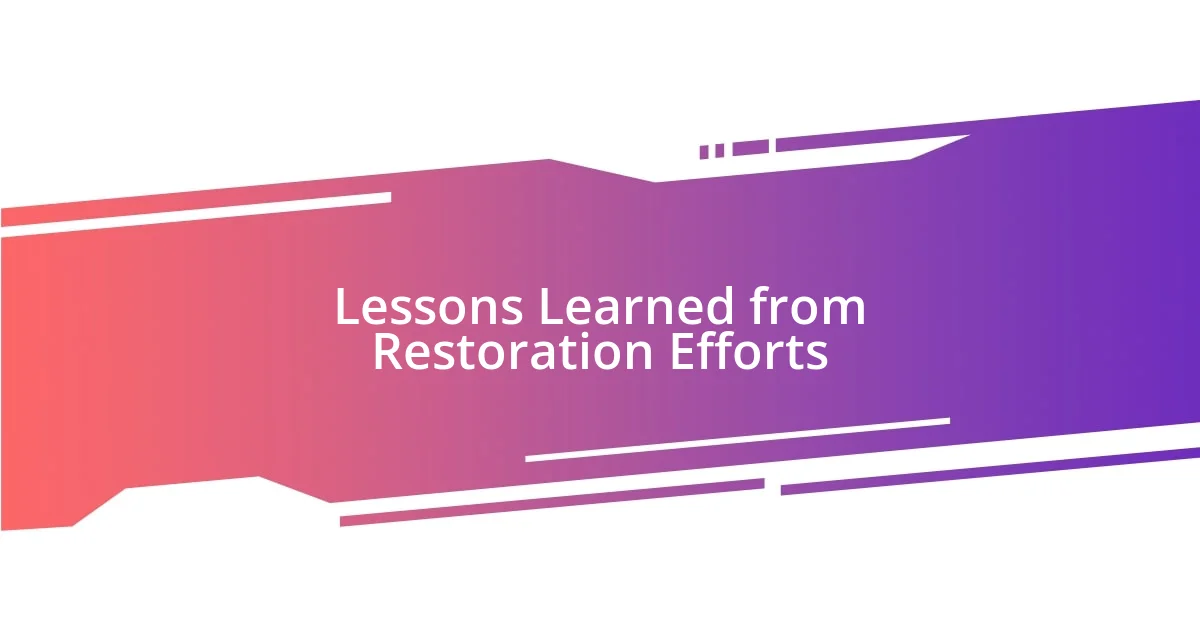
Lessons Learned from Restoration Efforts
Restoration efforts often teach us that patience is paramount. There was a project where we replanted native species along a riverbank, and I vividly remember the moment of disappointment upon returning weeks later to find that many of the plants had withered. It stung a bit—they were so beautiful when we planted them. But that setback was a lesson in resilience; I understood that nature operates on its own timeline. Looking back, I realized that some of those plants eventually grew back stronger. Isn’t that a perfect metaphor for hope and persistence?
Another key takeaway from my experiences is the importance of adapting strategies based on what we learn. During one restoration, we introduced a series of rock structures to create pools for fish. Initially, the team was thrilled by reports of increased fish populations. However, a year later, we noticed erosion issues around those structures. It was a real eye-opener. I had to ask myself: how could we find a balance between enhancing habitat and maintaining river integrity? This challenge sparked creative thinking, leading us to modify the structures for better sustainability. It’s fascinating how challenges can fuel innovation, don’t you think?
Finally, I’ve learned that sharing successes, no matter how small, builds momentum in the community. One winter, we celebrated the return of a particular bird species after a restoration. It wasn’t just a win for the ecology; it was a shared joy that sparked conversations among locals. People began to share their stories about spotting these birds, leading to a richer appreciation for our efforts. I often reflect on how those small moments of connection can inspire others to participate. What if every community felt that same sense of ownership over their ecosystem? The possibilities would be endless!

